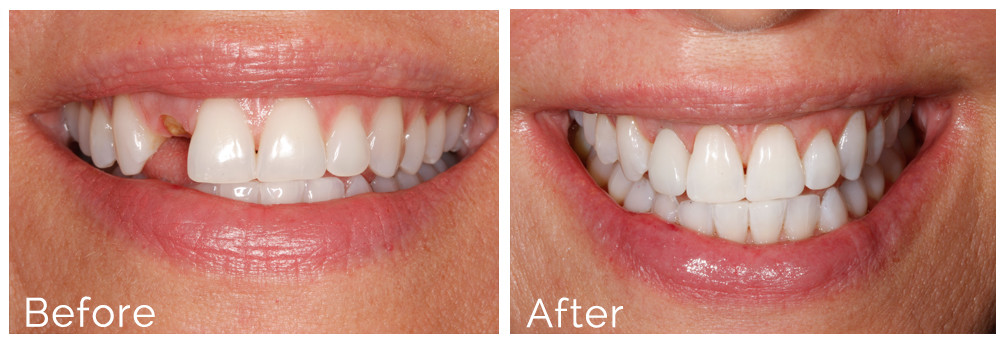The Ultimate Guide To Dental Sense
Table of ContentsThe Greatest Guide To Dental SenseThe 8-Minute Rule for Dental SenseExamine This Report about Dental SenseThe Single Strategy To Use For Dental Sense
are medical devices surgically implanted into the jaw to restore a person's ability to eat or their look. They give assistance for fabricated (phony) teeth, such as crowns, bridges, or dentures. When a tooth is lost because of injury or illness, a person can experience problems such as rapid bone loss, defective speech, or changes to eating patterns that lead to discomfort.Dental dental implant systems contain an oral implant body and dental implant joint and might likewise include a joint addiction screw. Front tooth filling. The oral implant body is surgically put in the jawbone in area of the tooth's root. The oral implant abutment is generally affixed to the dental implant body by the abutment addiction screw and extends via gum tissues into the mouth to sustain the connected synthetic teeth
(https://dentalsense1.bandcamp.com/album/dental-sense)Structure of The Dental Implant System choosing dental implants, speak to your dental copyright concerning the potential advantages and threats, and whether you are a prospect for the procedure. Things to think about: Your general health and wellness is a crucial consider figuring out whether you are a great candidate for dental implants, the length of time it will require to recover, and for how long the dental implant may remain in place.
Smoking cigarettes might impact the recovery process and lower the long-term success of the implant. The recovery procedure for the implant body might take numerous months or longer, throughout which time you normally have a momentary abutment instead of the tooth. the dental implant procedure: Carefully adhere to the dental hygiene guidelines offered to you by your dental service provider.
Dental Sense Things To Know Before You Buy
Implant failure can lead to the need for another procedure to deal with or replace the dental implant system. Recovers the capability to eat Restores cosmetic look Helps maintain the jawbone from reducing due to bone loss Protects the wellness of the surrounding bone and periodontals Aids keep nearby (neighboring) teeth stable Enhances lifestyle Damage to surrounding all-natural teeth throughout implant placement Injury to the surrounding cells during surgical treatment, such as sinus perforation Injury during surgical treatment (for instance, crack of bordering jawbone) Inadequate function, such as really feeling like the teeth do not attack with each other typically A feeling that the tooth hangs or twisting in position arising from a joint screw loosening Implant body failure (looseness of the implant body) because of systemic infection, which might be more probable in clients with unrestrained diabetics issues as a result of neighborhood infection in bone and gums supporting the implant body due to delayed healing, which may be much more likely in clients that smoke Problem cleansing the periodontals around the dental implant, resulting in inadequate dental health Unattended gum condition Post-surgical feeling numb as a result of nerve impingement or damages Constantly inform health and wellness treatment service providers and imaging specialists that you have dental implants before any type of magnetic vibration imaging (MRI) or x-ray treatments.
FDA is not familiar with any kind of damaging occasions reported for MRI or x-ray treatments with dental implants. Dental implants systems are generally made of products that adhere to global consensus standards of the International Company for Standardization (ISO) or ASTM International. These criteria have details of what makes a safe product.

An oral implant is a framework that replaces a missing out on tooth. With screw-like tools, the specialist inserts a dental implant into the jawbone, and it acts as a support for a synthetic tooth, called a crown. A tool called an abutment links the artificial tooth to the dental implant. The crown is personalized our website to fit the person's mouth and match the color of their teeth.
Dental Sense Fundamentals Explained
Some people are not eligible for dental implant surgical treatment. It is for dental cosmetic surgeons to operate on people with: severe illnessuncontrollable metabolic diseasebone or soft tissue illness or infectionIf these issues are fixed, a person can have the surgery. In, dental doctors avoid running on individuals with: If people with any of the above undergo dental implant surgical procedure, there is a higher danger of the dental implant failing.

Dental dental implant surgical procedure is an individualized procedure. It's not the same for everybody. Yet the following provides a basic overview of what you can expect your dental practitioner, oral doctor, periodontist or prosthodontist to do: Position the implant surgically. Give you time to heal. Attach the article and last crown, bridge or denture.
Next off, your cosmetic surgeon will thoroughly position the oral implant right into your jaw. If your implant is near the front of your mouth, your dental practitioner will certainly make a momentary tooth for you to use up until you recover.
A Biased View of Dental Sense
Your service provider can inform you what to expect in your situation. Throughout the healing stage, your jawbone must fuse to the dental implant. This procedure, called osseointegration, is vital for stability and long-lasting success. This procedure can take anywhere from three to 9 months. Sometimes, it might take longer.
Once your dental implant heals, your dentist can affix the abutment (little connector article) and your last remediation (crown, bridge or denture). This generally takes about one hour to complete and might require a second small surgery. You shouldn't really feel any kind of pain throughout your oral implant treatment since your company will certainly use medicine to numb your gum tissues.